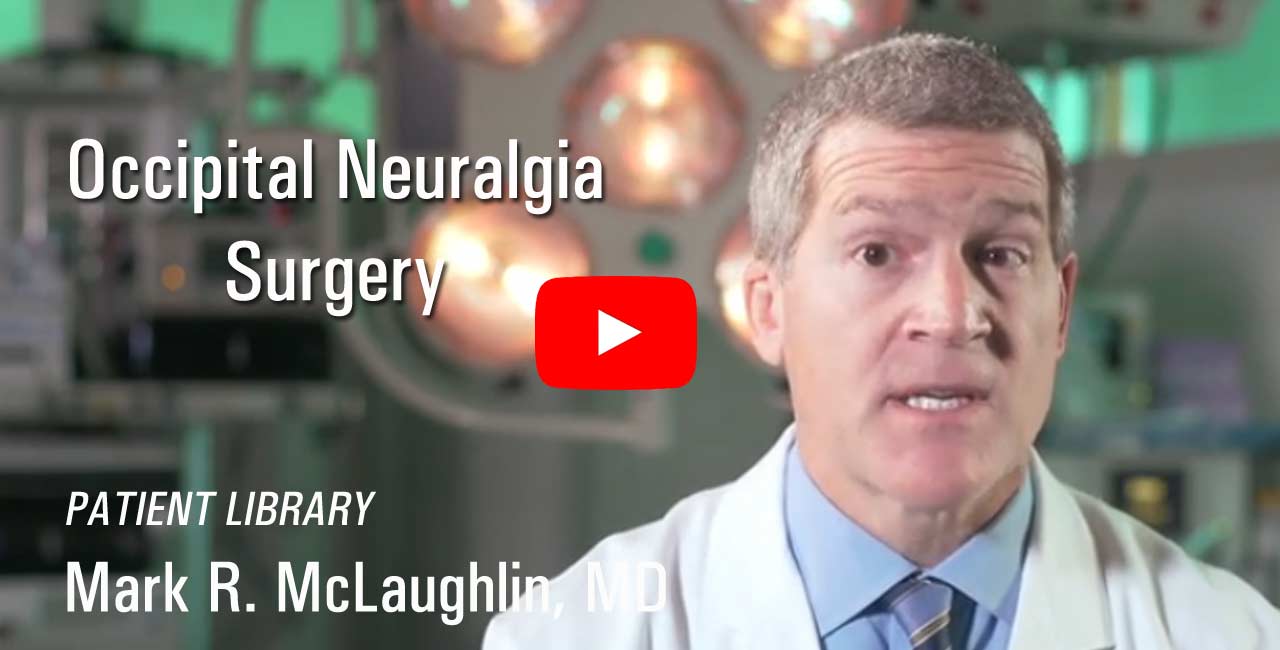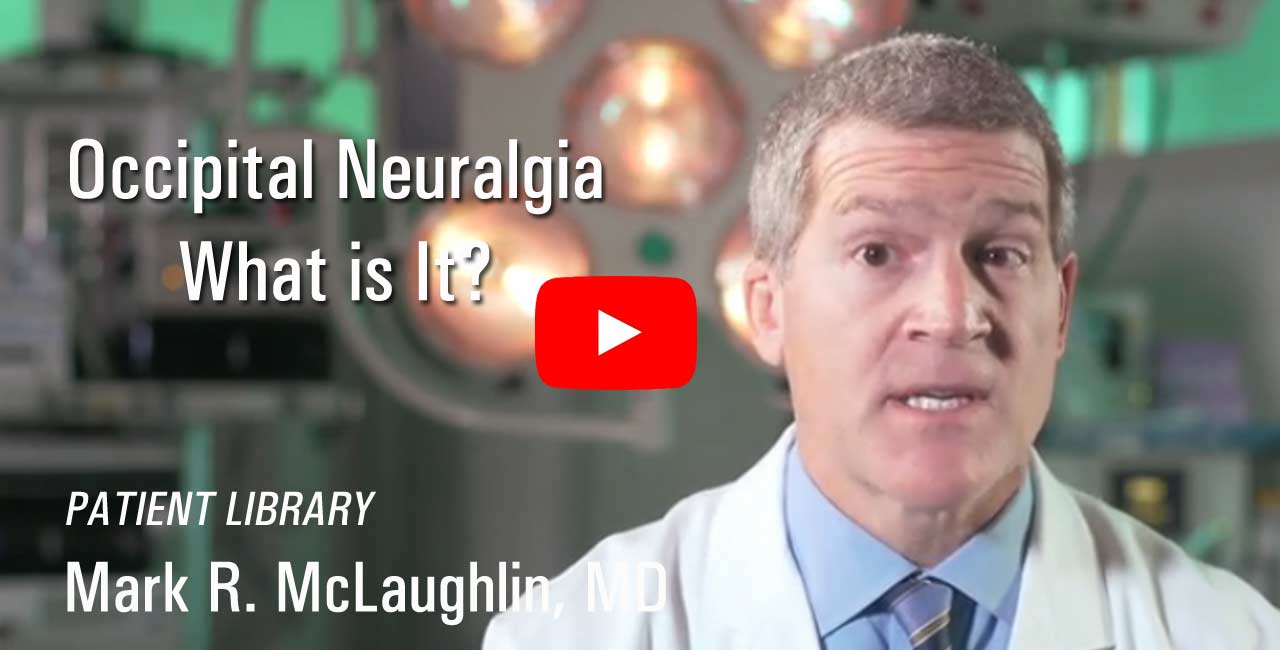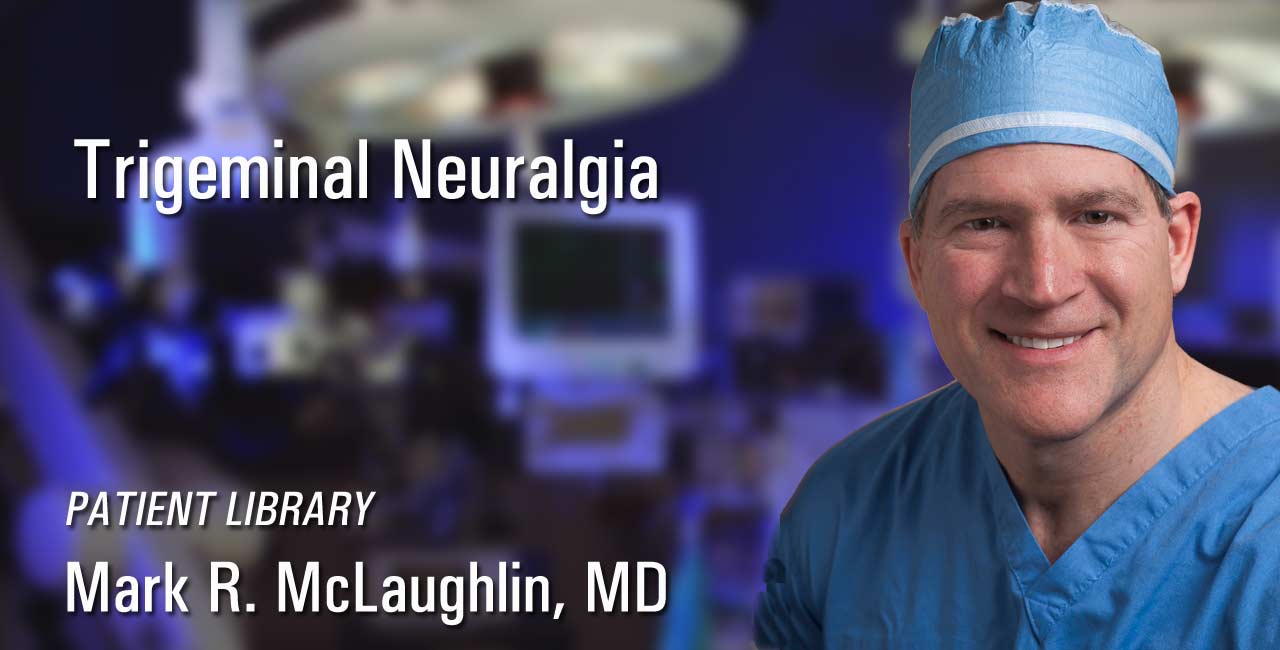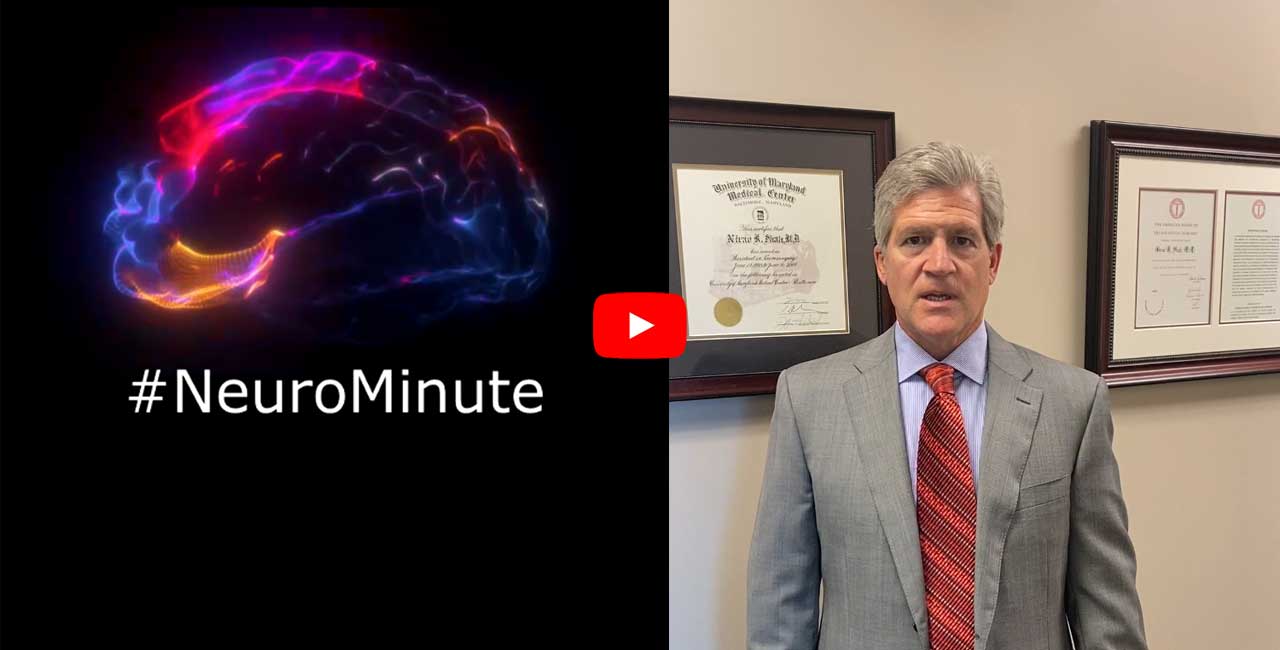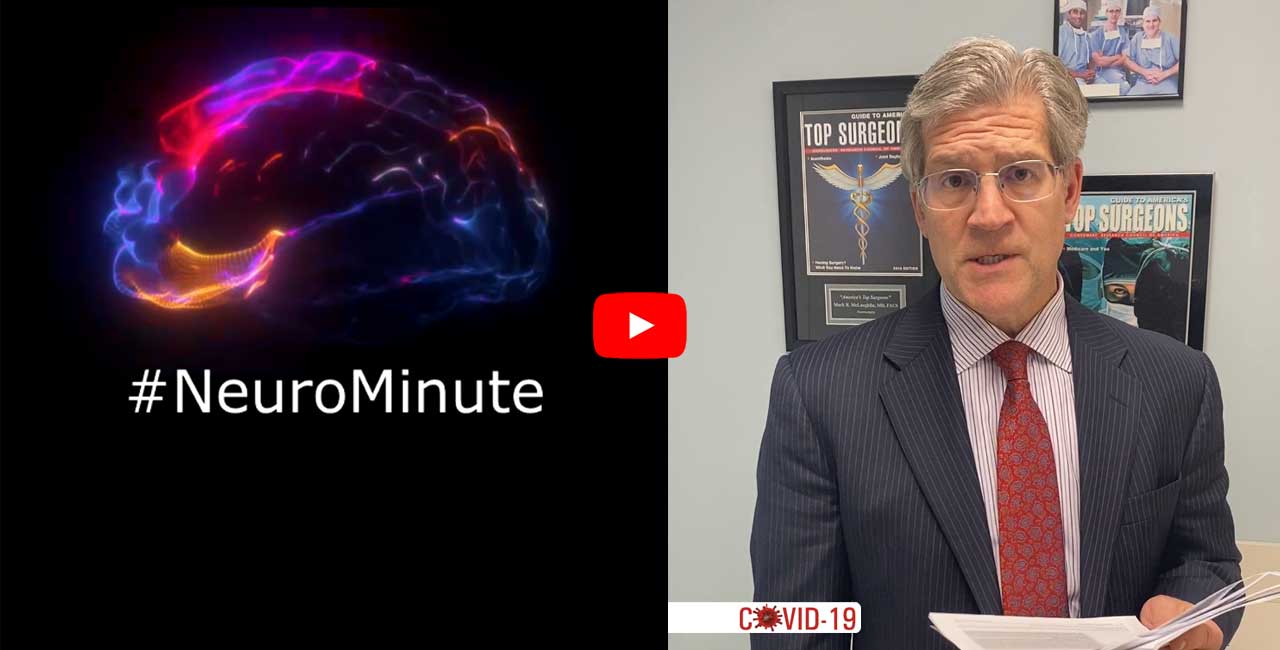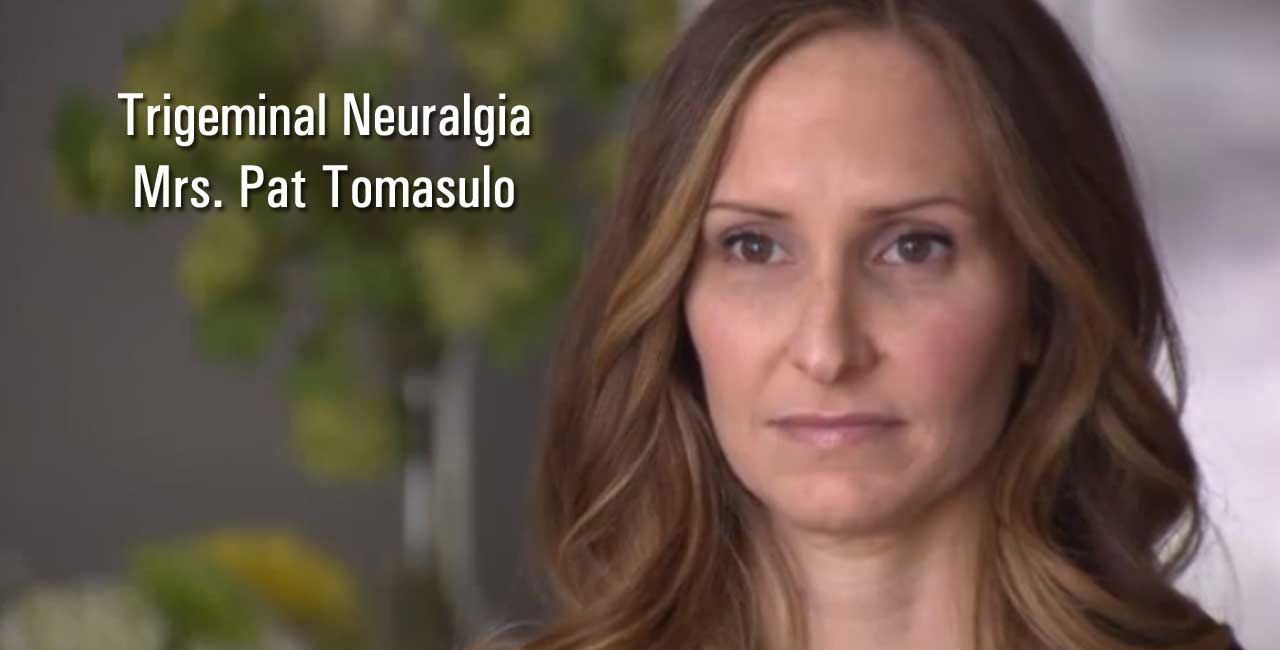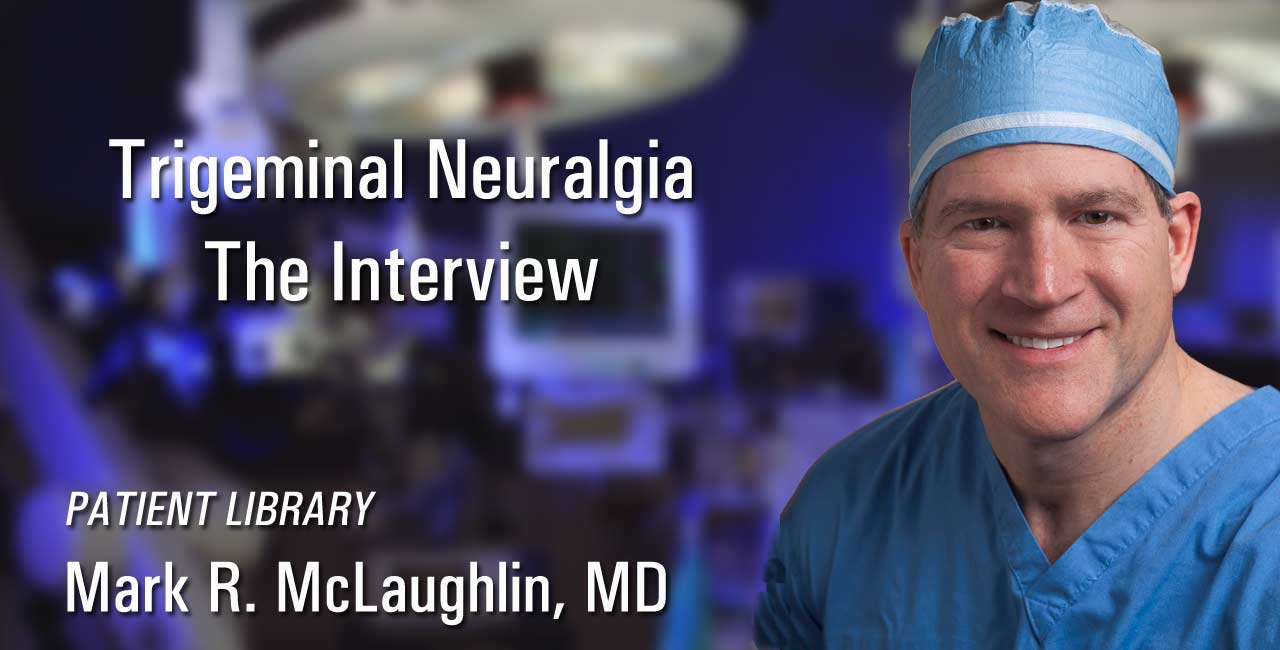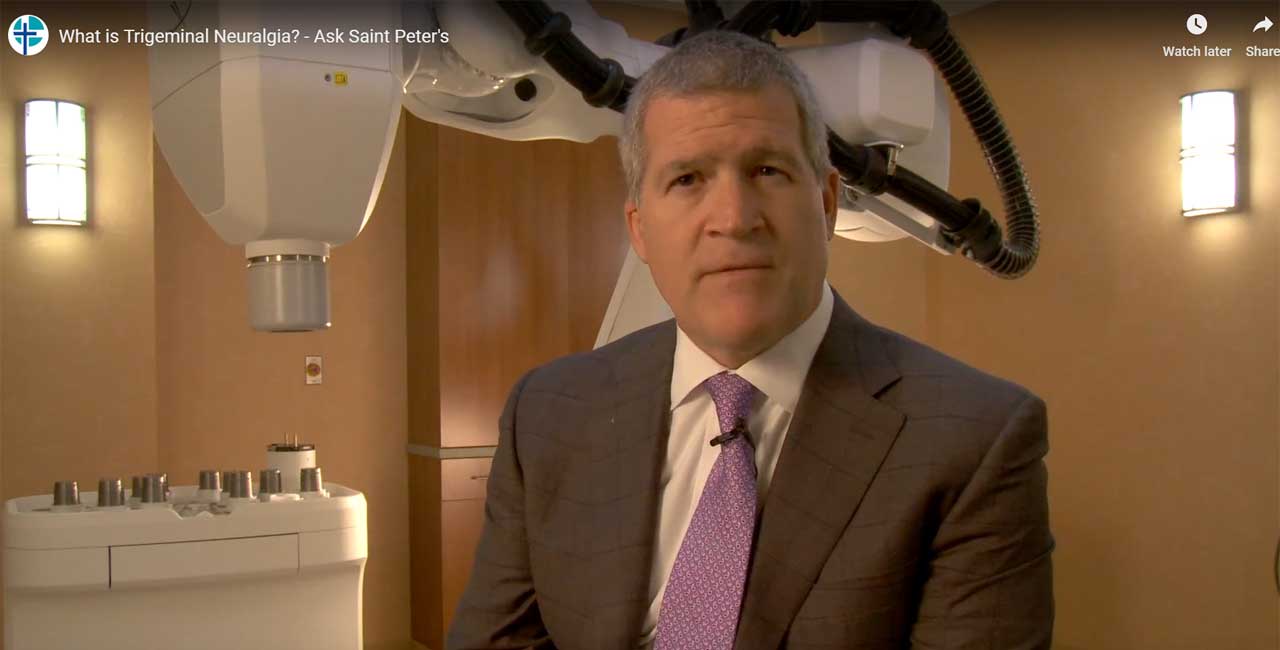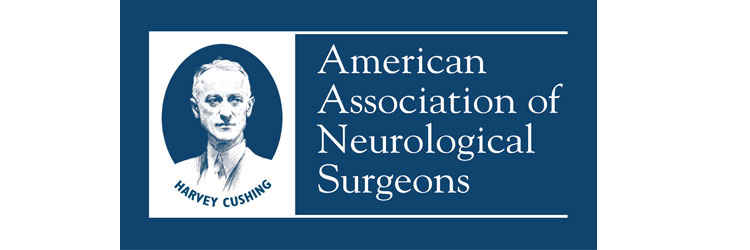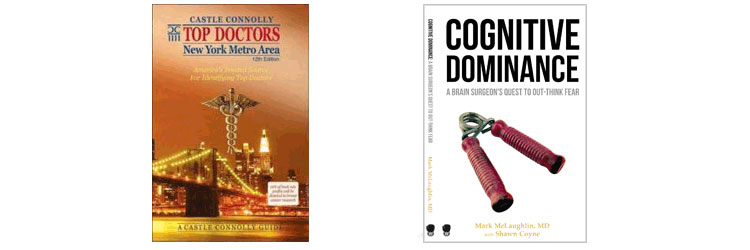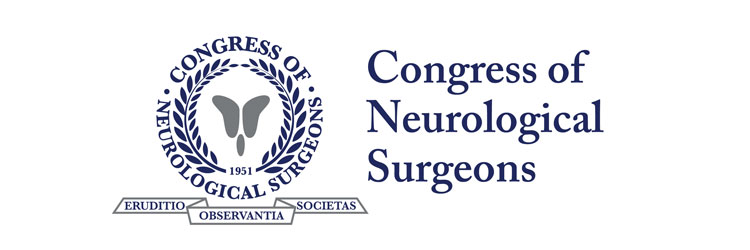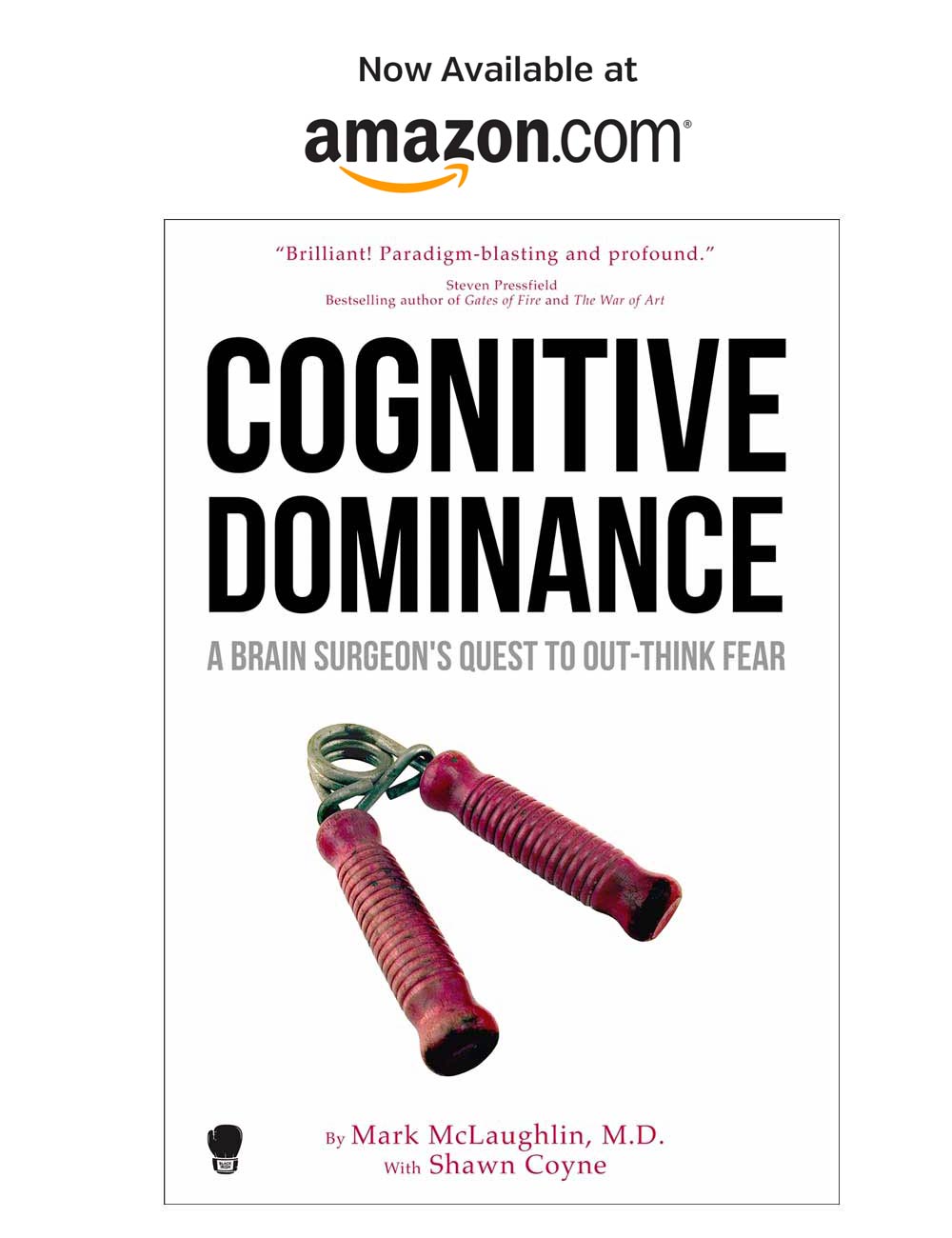Occipital Neuralgia
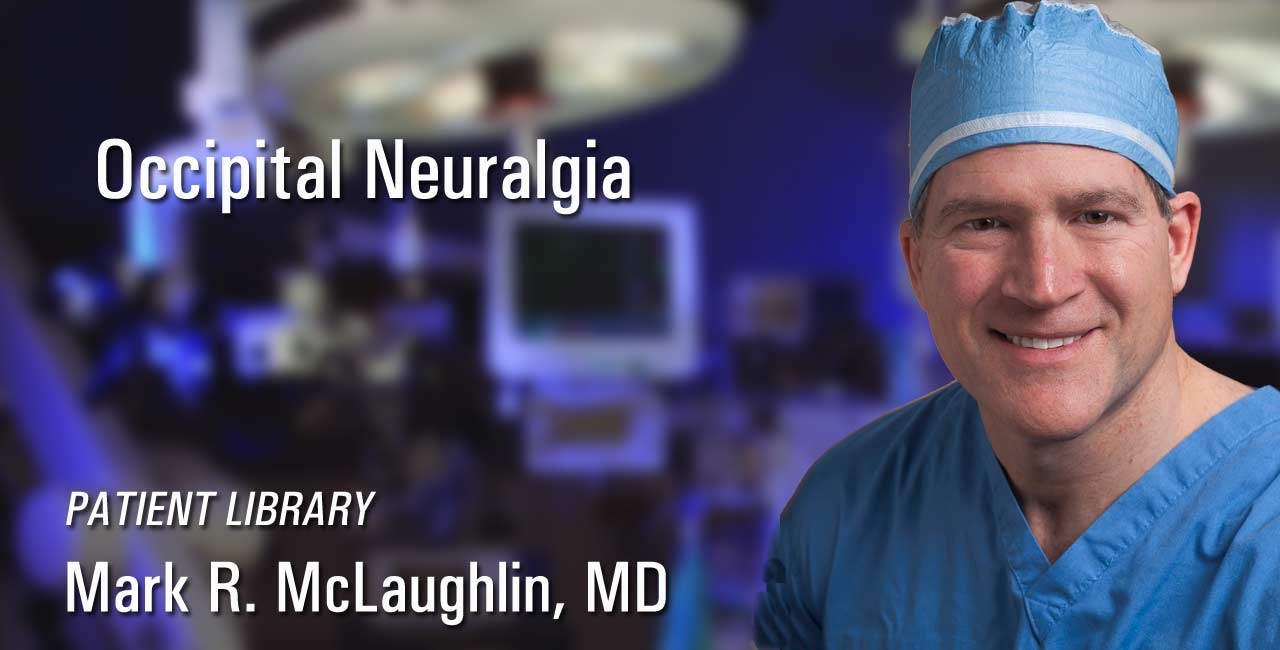
What You Need to Know about Occipital Neuralgia
By Mark R. McLaughlin, MD, FACS, FAANS
Just imagine the discomfort and shock. One minute you are fine, the next, you are suffering from a headache unlike any you have ever experienced — pain described as throbbing, like an electrical shock, one that seems to pierce your upper neck, back of the head and behind your ears. Pain can also occur in other areas of the head - behind the eyes, and on the scalp and forehead.
This pain has a name. It is Occipital Neuralgia (ON), a common disease that is often commonly misunderstood or not diagnosed by many physicians. It’s a condition that can occur after a whiplash-type event or any other kind of local trauma to the back of the head or behind the ear. It can also happen spontaneously without any trauma or injury. It is not life-threatening, but it can dramatically affect quality of life.
The occipital nerve is one of the few nerves in the body that penetrates directly through the muscle fibers of the neck, rather than traveling along a fascial plane. Picture an electrical wire that instead of traveling along the side of the windowsill, pierces right through the middle of the blinds. This makes the nerve vulnerable to muscle tears, spasms and localized trauma. Patients who keep their heads down, or in a forward position can also have ON, and it can also be caused by localized infection or inflammation including diabetes and gout.
Fortunately the disease is usually self-limiting and improves spontaneously. More severe forms of ON cause persistent pain, and require medical or surgical intervention.
How is Occipital Neuralgia Treated?
Medical intervention consists of anti-convulsant medications, such as gabapentin (Neurontin), or antidepressants such as Lyrica or Cymbalta, which seem to have a positive effect on pain symptoms. When the medical approach doesn’t work, the next option is usually spinal cord stimulation, a reversible procedure that has also helped patients. When spinal cord stimulation is ineffective, surgical intervention is also a viable choice for a patient for whom other options haven’t worked.
A surgical intervention that seems to have most benefit is intradural cervical C1-C3 rhizotomy. What is particularly positive about this procedure is that prior to this surgery, an assessment can be made using a CT-guided nerve block that can definitively confirm occipital neuralgia and can also demonstrate to patients what it would feel like if the rhizotomy were actually done.
Is this Treatment Effective?
Success rates for intradural C1-C3 cervical rhiztotomy are in the 70-75% range. It is important to note that patients who have this procedure will have permanent numbness around the ear and back of head; many patients do not seem to mind, feeling the numbness is preferable to pain.
It has been my experience, gained during more than 15 years of treating patients with occipital neuralgia, that many times the ON diagnosis has been missed. Just as frustrating for patients is when the disease has been diagnosed correctly, but then is under-treated. While it may seem like a radical and overly aggressive approach to section sensory nerves in an otherwise healthy person, the deficits are minimal and the potential benefit is high. We have also seen some patients, previously on extremely high doses of narcotics, who could be weaned off after occipital interdural rhizotomy.
As a summary, I have seen many patients become better, some dramatically. A few are the same. From what I have experienced, only rarely is someone worse after this procedure.
What was once considered a nearly impossible disease to treat (or was not acknowledged as an actual disease) is now treatable, through a number of options. With the advent of spinal cord stimulation and more effective medications combined with a reliable surgical procedure, often we are able to find a satisfactory and effective treatment for occipital neuralgia.
References:
1. Wolter T. Spinal cord stimulation for neuropathic pain: current perspectives. J Pain Res. 2014; 7: 651–663. http://www.ncbi.nlm.nih.gov/pmc/articles/PMC3422091/
2. Vanelderen P1, Lataster A, Levy R, Mekhail N, van Kleef M, Van Zundert J. Occipital neuralgia. Pain Pract. 2010 Mar-Apr;10(2):137-44. http://www.ncbi.nlm.nih.gov/pubmed/20415731
The American Association of Neurological Surgeons article regarding Occipital Neuralgia.
Neuralgia Information for Patients - Expert Princeton Neurosurgeon
Surgery for Occipital Neuralgia
Surgical treatment for occipital neuralgia is sometimes required. In this video, Dr. McLaughlin explains the key points that will be considered before surgery is recommended.
What is Occipital Neuralgia?
Occipital neuralgia is a distinct type of headache characterized by piercing, throbbing, or electric-shock-like chronic pain in the upper neck, back of the head, and behind the ears, usually on one side of the head.
Trigeminal Neuralgia | Tic Douloureux
Trigeminal neuralgia (also called Tic Douloureux) is a chronic pain condition characterized by recurring episodes of extreme, sporadic, sudden burning or electric shock-like face pain.
Glossopharyngeal Neuralgia
Glossopharyngeal neuralgia is a condition characterized by recurring episodes of severe pain in the tongue, throat, ear, and area near the tonsils. An overview from Dr. McLaughlin.
Occipital Neuralgia
Occipital Neuralgia (ON) is a common disease that is often often misunderstood or not diagnosed by many physicians. Princeton New Jersey neurosurgeon Mark R. McLaughlin, MD explains.
Trigeminal Neuralgia in a Time of COVID-19
Video: Stress may result in increased perception of facial pain from Trigeminal Neuralgia. Dr. McLaughlin offers some thoughts on dealing with TN during the coronavirus crisis. April 2020
Trigeminal Neuralgia: COVID19 - Video Update
September 2021: Video update with Mark R. McLaughlin, MD. What you need to know about COVID19 and Trigeminal Neuralgia.
Trigeminal Neuralgia with COVID-19 Virus
Video January 2022 : Dr. McLaughlin highlights the current literature as it relates to Trigeminal Neuralgia and the Covid Virus. What have we learned?
Trigeminal Neuralgia : Covid-19 Vaccination
A January 2022 review of medical literature related to COVID-19 vaccination, Trigeminal Neuralgia, and Neurological Complications. What does the medical literature tell us?
WGN TV Video About Trigeminal Neuralgia
The wife of WGN Sports Anchor Pat Tomasulo suffers from Trigeminal Neuralgia. An informative video.
Trigeminal Neuralgia : The Interview
Dr. McLaughlin was interviewed about Trigeminal Neuralgia and his experience as a top Neuralgia specialist in New Jersey.
Saint Peter's Healthcare Video: Trigeminal Neuralgia
One of my great passions is the treatment of Trigeminal Neuralgia. It is a traumatizing and painful condition. This video was prepared for Saint Peters Healthcare. In it, I answer some common questions about TN.
Surgery for Occipital Neuralgia
Surgical treatment for occipital neuralgia is sometimes required. In this video, Dr. McLaughlin explains the key points that will be considered before surgery is recommended.
What is Occipital Neuralgia?
Occipital neuralgia is a distinct type of headache characterized by piercing, throbbing, or electric-shock-like chronic pain in the upper neck, back of the head, and behind the ears, usually on one side of the head.
Trigeminal Neuralgia | Tic Douloureux
Trigeminal neuralgia (also called Tic Douloureux) is a chronic pain condition characterized by recurring episodes of extreme, sporadic, sudden burning or electric shock-like face pain.
Glossopharyngeal Neuralgia
Glossopharyngeal neuralgia is a condition characterized by recurring episodes of severe pain in the tongue, throat, ear, and area near the tonsils. An overview from Dr. McLaughlin.
Occipital Neuralgia
Occipital Neuralgia (ON) is a common disease that is often often misunderstood or not diagnosed by many physicians. Princeton New Jersey neurosurgeon Mark R. McLaughlin, MD explains.
Trigeminal Neuralgia in a Time of COVID-19
Video: Stress may result in increased perception of facial pain from Trigeminal Neuralgia. Dr. McLaughlin offers some thoughts on dealing with TN during the coronavirus crisis. April 2020
Trigeminal Neuralgia: COVID19 - Video Update
September 2021: Video update with Mark R. McLaughlin, MD. What you need to know about COVID19 and Trigeminal Neuralgia.
Trigeminal Neuralgia with COVID-19 Virus
Video January 2022 : Dr. McLaughlin highlights the current literature as it relates to Trigeminal Neuralgia and the Covid Virus. What have we learned?
Trigeminal Neuralgia : Covid-19 Vaccination
A January 2022 review of medical literature related to COVID-19 vaccination, Trigeminal Neuralgia, and Neurological Complications. What does the medical literature tell us?
WGN TV Video About Trigeminal Neuralgia
The wife of WGN Sports Anchor Pat Tomasulo suffers from Trigeminal Neuralgia. An informative video.
Trigeminal Neuralgia : The Interview
Dr. McLaughlin was interviewed about Trigeminal Neuralgia and his experience as a top Neuralgia specialist in New Jersey.
Saint Peter's Healthcare Video: Trigeminal Neuralgia
One of my great passions is the treatment of Trigeminal Neuralgia. It is a traumatizing and painful condition. This video was prepared for Saint Peters Healthcare. In it, I answer some common questions about TN.
